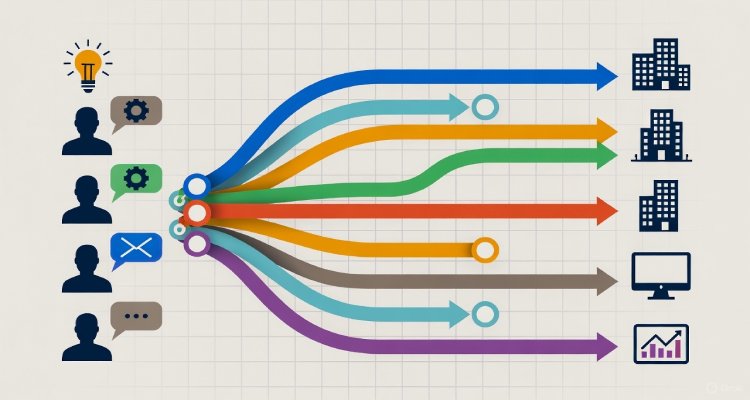Govt Launches Fully Digitised National Marine Fisheries Census 2025
India launches its first fully digital National Marine Fisheries Census 2025, covering over 1.2 million fisher households to build a geo-referenced national database for evidence-based policymaking.
Introduction: A Digital Wave in India’s Marine Sector
In a landmark step toward data-driven governance, the Government of India has launched the fully digitised National Marine Fisheries Census (MFC) 2025, marking a historic shift from paper-based enumeration to a tech-powered, real-time data system. Union Minister of State for Fisheries, Animal Husbandry and Dairying George Kurian inaugurated the household enumeration phase at the ICAR–Central Marine Fisheries Research Institute (CMFRI) in Kochi on November 1, 2025.
This nationwide initiative represents a monumental stride in understanding and empowering India’s vast coastal communities — the backbone of the nation’s marine economy.
Context & Background: A Vital Exercise for Coastal India
India’s marine fisheries sector supports millions of livelihoods, spanning 13 coastal states and Union Territories, including the Andaman & Nicobar Islands and Lakshadweep. Conducted every five years, the Marine Fisheries Census provides critical socio-economic and demographic data that shape fisheries policies, welfare programs, and sustainable management strategies.
However, past editions relied heavily on paper-based data collection, making updates slow and prone to errors. The 2025 edition, executed under the Pradhan Mantri Matsya Sampada Yojana (PMMSY), marks the first-ever fully digital census — a move expected to revolutionize how India manages its coastal and marine resources.
Main Developments: Inside the 2025 Marine Fisheries Census
The 2025 census aims to cover over 1.2 million fisher households across 5,000 marine fishing villages, using mobile-based applications for real-time, geo-referenced data collection.
The Department of Fisheries (DoF) under the Ministry of Fisheries, Animal Husbandry and Dairying coordinates the exercise, with CMFRI as the nodal agency and the Fishery Survey of India (FSI) as the operational partner.
The 45-day enumeration, scheduled from November 3 to December 18, 2025, will document:
- Household details including income, home ownership, credit sources, and insurance.
- Socio-economic impacts of the COVID-19 pandemic on fisher families.
- Fisheries infrastructure, such as landing centers, harbors, jetties, markets, and processing plants.
- Fishing assets like boats, gears, and crafts across 1,200 landing centers and 50 fishing harbors.
The census will generate India’s most comprehensive and granular fisheries database, laying the foundation for evidence-based planning, resource management, and welfare programs.
Digital Transformation: Tech-Driven Enumeration Tools
The 2025 census is powered by a suite of custom-designed, multilingual Android applications created by CMFRI:
- VyAS–NAV: For validation of fishing villages and harbors.
- VyAS–BHARAT: For household and infrastructure enumeration.
- VyAS–SUTRA: For real-time supervision, monitoring, and data accuracy.
These tools ensure paperless, geo-tagged data collection, minimizing manual errors while accelerating compilation and analysis. For the first time, authorities can access real-time visual dashboards to monitor field progress and data accuracy — a step that could redefine governance efficiency in India’s marine sector.
Expert Insight: “A Leap Toward Evidence-Based Fisheries Management”
Experts have hailed the 2025 census as a turning point. A senior scientist from CMFRI noted, “This digitised approach allows policymakers to make swift, informed decisions. From disaster preparedness to welfare disbursal, accurate real-time data changes everything.”
Union Minister George Kurian emphasized the initiative’s transformative potential, stating that digitisation will empower fisher communities by ensuring that no household is left out of welfare programs. He added that the new system aligns with Digital India and Blue Economy goals — enhancing transparency, accountability, and efficiency in marine governance.
Impact & Implications: A Blueprint for the Future
The digitised Marine Fisheries Census 2025 holds far-reaching implications for multiple sectors:
- For Policymakers: Access to reliable, real-time data will enable targeted policy interventions and data-backed decisions in fisheries and coastal development.
- For Fisher Families: The inclusion of socio-economic indicators like debt, income, and insurance will help design customized welfare and financial inclusion programs.
- For Researchers: The granular database will support sustainability studies, disaster resilience mapping, and biodiversity conservation.
- For the Economy: By quantifying the fisheries sector’s economic contribution, India strengthens its global position as a maritime and aquaculture leader.
Ultimately, the 2025 census represents more than a technological upgrade — it’s a social innovation aimed at giving visibility and voice to millions living by India’s shores.
Conclusion: Digitising the Future of the Sea
As India transitions to a data-smart fisheries sector, the fully digitised National Marine Fisheries Census 2025 stands as a model for integrated, technology-led governance. Beyond counting fishers and boats, it captures the human stories behind the nets — the aspirations, challenges, and resilience of coastal India.
By fusing science, policy, and digital innovation, the census reinforces India’s commitment to sustainable blue growth and inclusive development — one data point at a time.
Disclaimer: This article is based on official information released by the Government of India and the ICAR–CMFRI. The views expressed are for informational purposes only.











